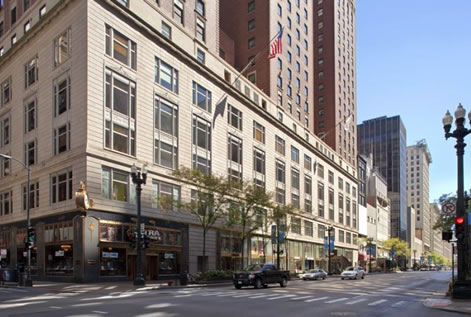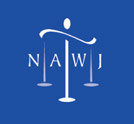2015 Midyear Conference - CLE

Voices of Justice: Keeping the Promise of the Rule of Law Through Enhancing Judicial Diversity and Leadership
National Association of Women Judges
NAWJ Midyear Meeting and Leadership Conference
April 23-25, 2015
Chicago, Illinois
CLE Supplemental Readings and Written Materials by Session
Midyear 2015 Conference
SCHEDULE OF SESSIONS
| THURSDAY, APRIL 23 | |
| 1:20 PM-2:30 PM | GANG INVOLVEMENT IN HUMAN TRAFFICKING
We will focus on addressing the complicated intersection of increasing gang involvement in both labor and sex trafficking. This session’s focus is on the dynamics and implications for the courts of gang involvement in human trafficking. State courts across the nation, as well as federal agencies, have reported seeing increasing numbers of trafficking victims who are being forced into trafficking and are controlled by a variety of different types of gangs, ranging from locally based youth street gangs to nationally affiliated adult controlled gangs, and international gangs with operations linking across state and international borders. In short, the purposes of the two panel session will be to increase understanding among the NAWJ membership. This session will focus on the dynamics and implications for the courts of gang involvement In human trafficking. • why, and how gangs have become involved in a variety of forms of labor and sex trafficking involving both U.S citizen and foreign national youth; Supplemental Readings: Portland State University Memo to US Attorney General for Oregon - Commercial Sexual Exploitation Link Between Street Gangs and Trafficking in Persons by Laura Lederer |
| 2:35 PM-3:35 PM | HUMAN TRAFFICKING: WHAT JUDGES CAN DO
We will focus on addressing the complicated intersection of increasing gang involvement in both labor and sex trafficking. This session’s focus is on the scope of gang involvement in human trafficking. State courts across the nation, as well as federal agencies, have reported seeing increasing numbers of trafficking victims who are being forced into trafficking and are controlled by a variety of different types of gangs, ranging from locally based youth street gangs to nationally affiliated adult controlled gangs, and international gangs with operations linking across state and international borders. In short, the purposes of the two panel session will be to increase understanding among the NAWJ membership. This session will focus on what judges can do, emerging best practices as established by dedicated trafficking courts and dockets, and the role of judges from the bench. • why, and how gangs have become involved in a variety of forms of labor and sex trafficking involving both U.S citizen and foreign national youth; Supplemental Readings: |
| FRIDAY, APRIL 24 | |
| 9:10 AM -10:25 AM | WOMEN IN THE LEGAL PROFESSION
This session will present findings of a recent study of women in the profession. As revealed in the study, women are consistently underrepresented in lead counsel positions and in the role of trial attorney for all but a few types of cases. In civil cases, men are three times more likely than women to appear as lead counsel and to appear as trial attorneys. Recommendations for closing the gap will be discussed as best practices and strategies that can be implemented by law schools, law firms, courts, clients, and women lawyers themselves to increase the ranks of women lead counsel. Panelists will share their experiences as related to women, the courts and the legal profession. |
| 10:15 AM-11:30 AM | ACCESS TO JUSTICE THROUGH DIVERSE LEADERSHIP—APPOINTING WOMEN TO BOARDS AND COMMISSIONS
Judges can improve access to justice for all members of the community through the use of their powers of appointment. Courts appoint special masters, lead counsel in class action cases and trustees in bankruptcy or probate. Courts also appoint counsel in court committees and task forces that do important policy and oversight work within the legal system. These appointments can increase diversity and provide an important platform for the development of leaders of the bar, and can also serve as a pipeline to the bench. Join this panel of experts to explore the use of the judicial power of appointment to improve access to justice for all. Supplemental Readings: Application for Consideration for Receivership Attachment to MDL Standards Letter |
| 1:00 PM-2:10 PM | RESTORATIVE JUSTICE: JUDGES WORKING WITH THE COMMUNITY TO HEAL INJUSTICE
This session examines the role of judges in outreach to, education of and participation with the community we serve. The program’s purpose is to inform attendees, judges and lawyers of the use of restorative practices to engage in meaningful conversations with members of the community, to demystify the system of justice and its function as one of the three branches of government, and to participate where necessary in partnership with community to better serve community needs for those involved with the justice system. Supplemental Readings: Restorative Justice: What’s it All About? by Kay Pranis |
| 2:25 PM-3:40 PM | IMMIGRATION
This session discusses and demonstrate the breadth of executive action and the issues being debated; that the issues don’t change over time; that all three branches of government, Executive, Legislative & Judicial play a role as well as the states and federal government; that both separation of powers and federal preemption issues are involved; the expansion of the Deferred Action for Childhood Arrivals (DACA) program and the new Deferred Action for Parents of Americans and Lawful Permanent Residents (DAPA) program announced by President Obama on November 20, 2014. Supplemental Readings: PowerPoint Presentation: Executive Action Immigration by Steven Weller Presidential Memo Welcoming Immigrants List of Executive Action Memos by Website Office of Legal Counsel Legal Memo on Executive Action Directive to Provide Consistency Regarding Advance Parole Policies to Promote and Increase Access to U.S. Citizenship Exercising Prosecutorial Discretion Personnel Reform for ICE Officers Southern Border and Approaches Campaign Expansion of the Provisional Waiver Program Apprehension Detention Removal of Undocumented Immigrants U.S. High Skilled Businesses and Workers Families of U.S. Armed Forces Members |
